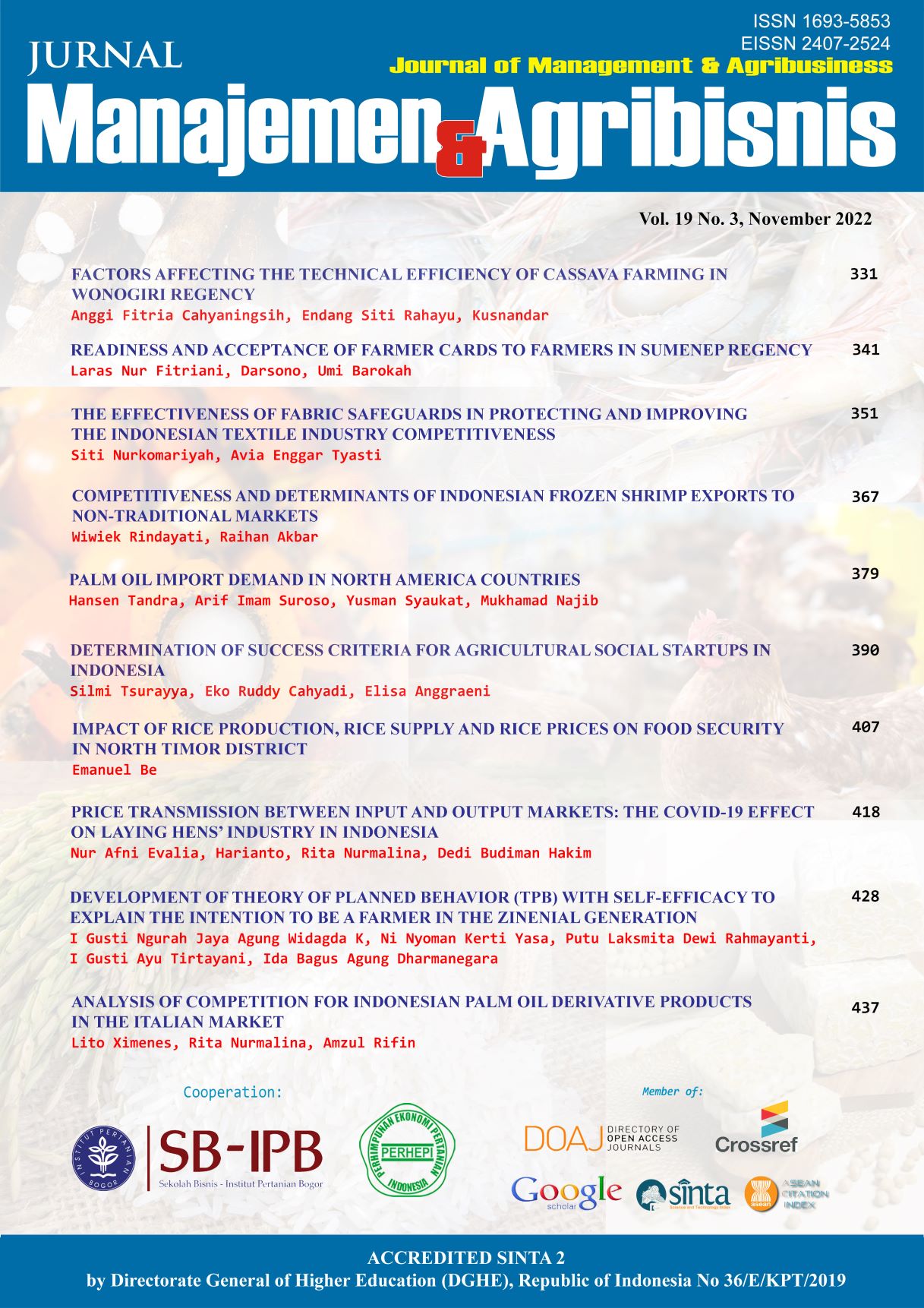Rice Balance Simulation in Order To Support Sustainable Rice Self-Sufficiency Program in North Sumatera
Abstract
The UPSUS program for food self-sufficiency launched by the government has succeeded in increasing national rice production, including in North Sumatera, by increasing the additional embedded area (LTT). However, the aspect of rice supply and distribution is still a problem, so rice imports are still carried out. This study aims to determine the rice balance by comparing the value of rice production to consumption every month throughout the year. The method used is a dynamic system approach using secondary data to build a simulation model. The simulation results show that, in general, the demand for rice has been fulfilled, although in certain months there is a deficit because the planting area in that month is not as large as in other months. Likewise, for some rice production centers, there are regions that experience rice deficits throughout the year. Therefore, efforts to improve supply chain management are an alternative solution to supporting sustainable rice self-sufficiency in North Sumatera.
Keywords: simulation, balance, rice, self-sufficiency, sustainability
Authors
Authors who publish with this journal agree to the following terms:
- Authors retain copyright and grant the journal right of first publication with the work simultaneously licensed under a Creative Commons Attribution License that allows others to share the work with an acknowledgement of the work's authorship and initial publication in this journal.
- Authors are able to enter into separate, additional contractual arrangements for the non-exclusive distribution of the journal's published version of the work (e.g., post it to an institutional repository or publish it in a book), with an acknowledgement of its initial publication in this journal.
- Authors are permitted and encouraged to post their work online (e.g., in institutional repositories or on their website) prior to and during the submission process, as it can lead to productive exchanges, as well as earlier and greater citation of published work (See The Effect of Open Access).

